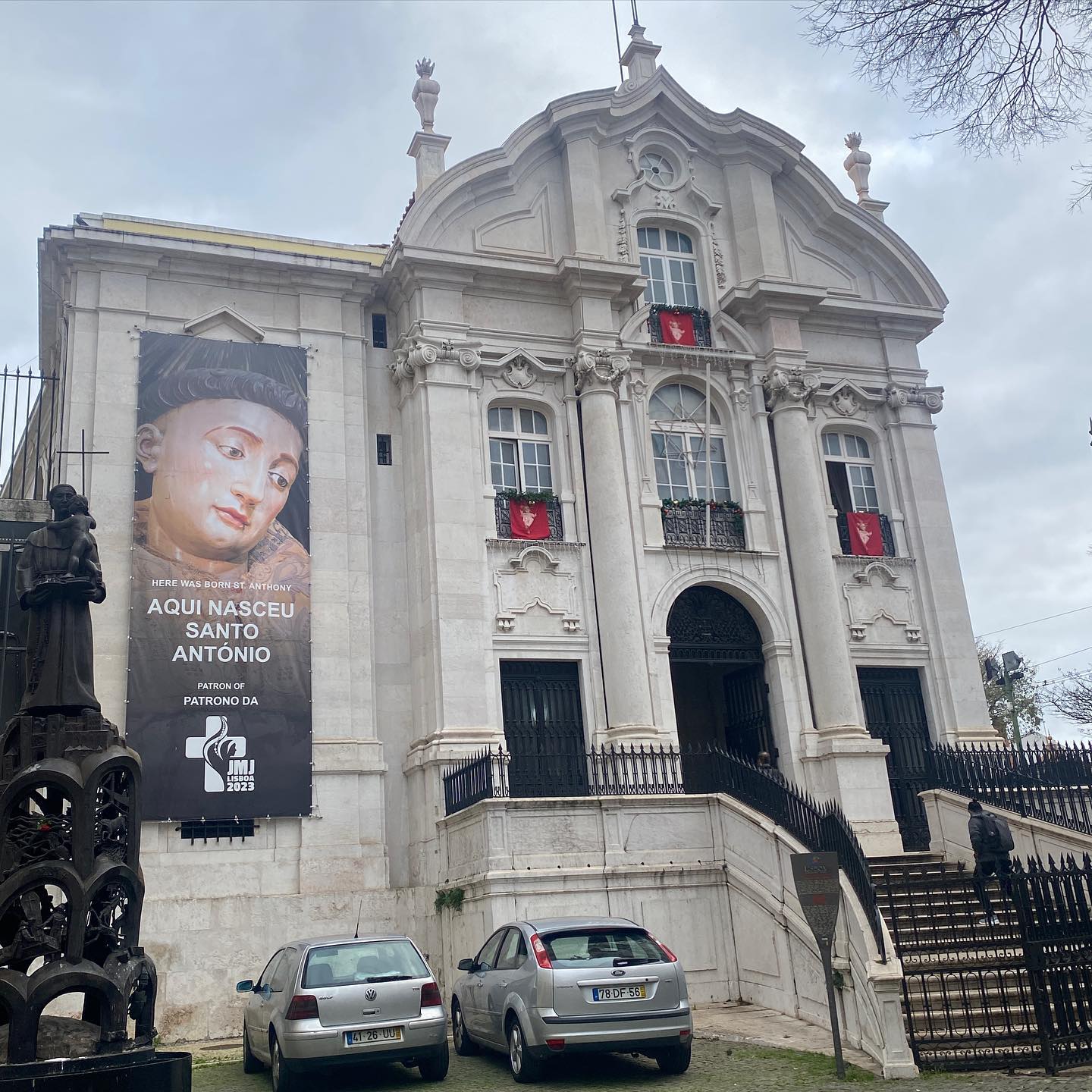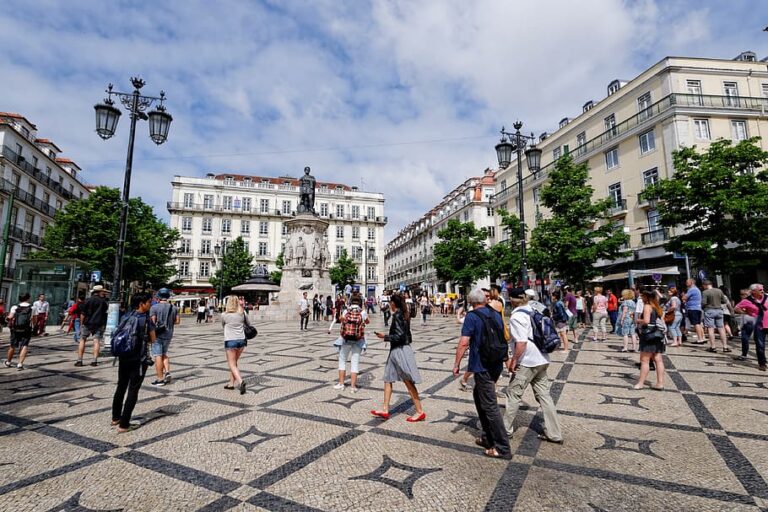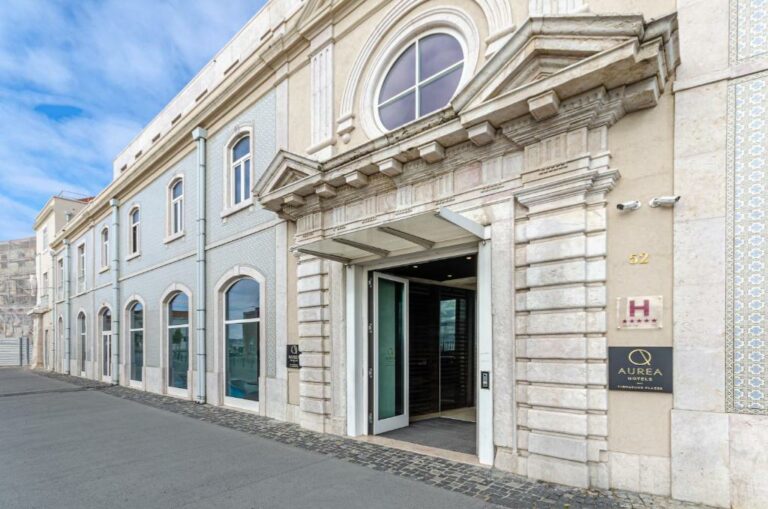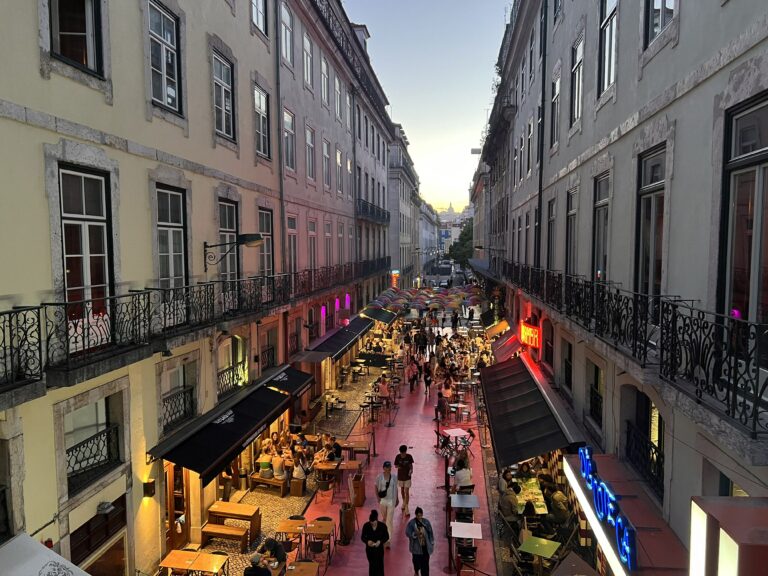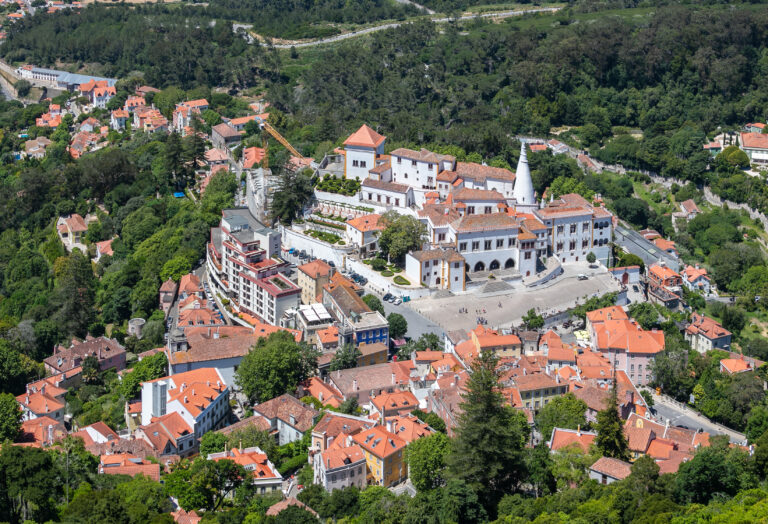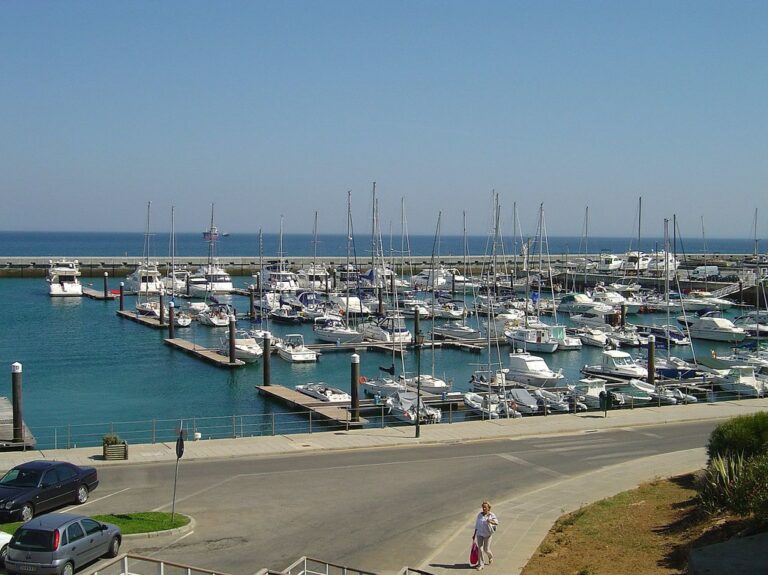Nestled in Lisbon, the Igreja Santo António Church is dedicated to Saint Anthony of Padua and is known for its intricate design and cultural heritage.
It’s worth a visit to experience its historical and spiritual significance. Let’s explore the history and plan your visit together.
History and Significance of Igreja de Santo António Church
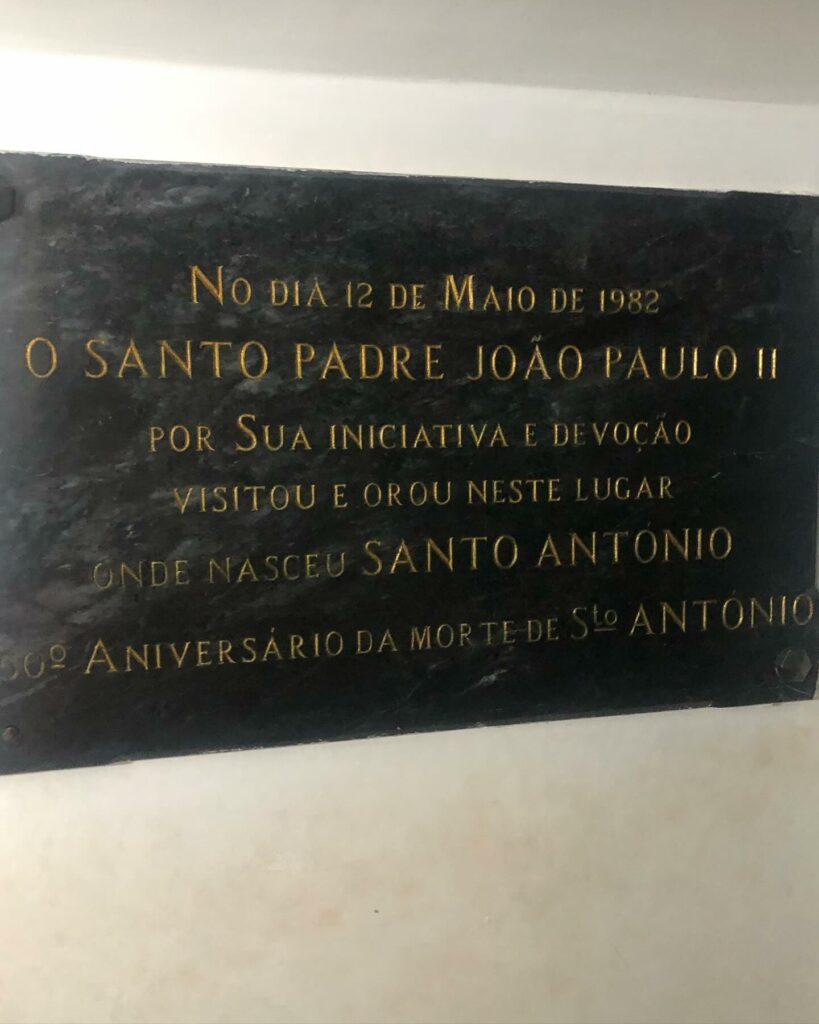
Saint Anthony Church, located between Alfma and the Baixa district, was built on the site where Saint Anthony was born in 1195.
The domed church is dedicated to a saint known as a matchmaker and a patron saint for recovering lost items.
He is the most popular Saint in Lisbon, and his statue stands outside the church.
The Igreja de Santo António church was initially built in the 15th century, but due to the 1755 earthquake, the current church dates back to the 18th century.
The Igreja de Santo António combines baroque and neoclassical styles. On the interior, a tile panel illustrates Pope John Paul II visiting the site in 1982.
A small museum is next to the church, part of the Lisbon Museum.
Admission to Santo Antonio Church and Museum
Igreja de Santo is free to explore, but you must pay €3.00 to visit the museum next door.
The ticket also gives you admission to the other branches of the Lisbon Museum.
The church is open daily from 8:00 AM until 7:00 PM, but on a feast day, Saturday and Sunday, the hours are extended to 7:45 PM—the crypt and the sacristy close for an hour’s lunch.
Also, dress accordingly, as church services are weekly during this time. On Fridays, there are three services, one at 11:00 AM, 5:00 PM, and 7:00 PM, and on weekends and feast days.
What to Expect Visiting Igreja de Santo
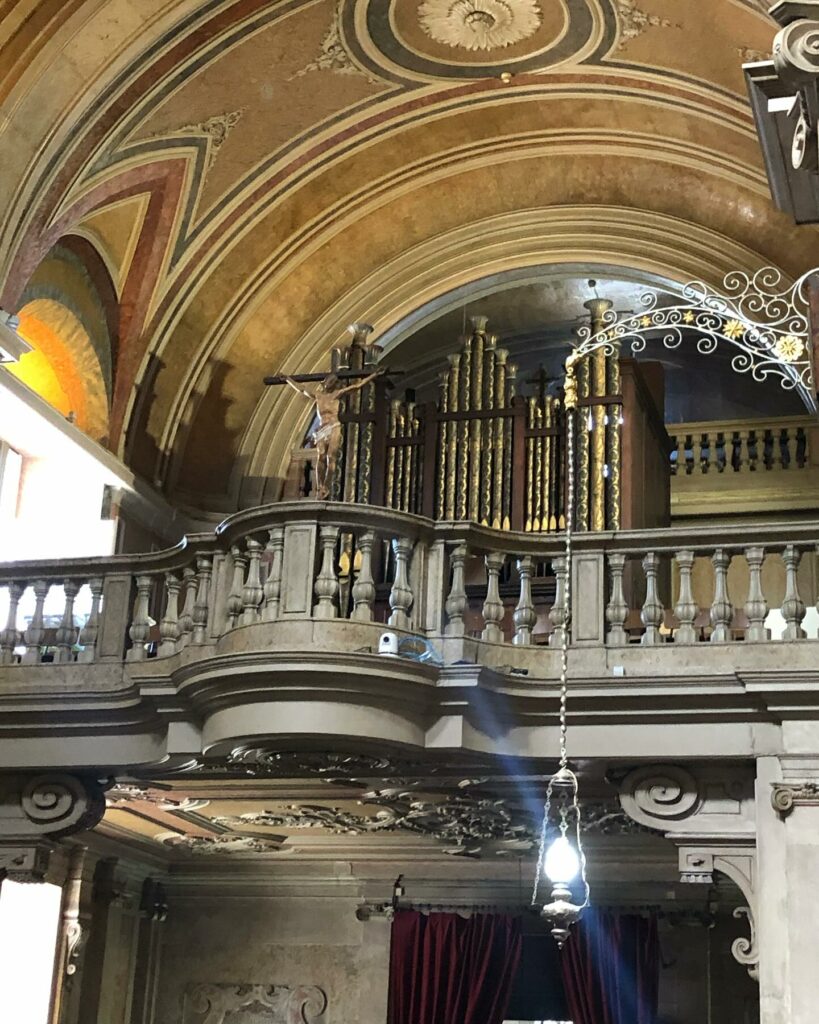
When visiting Santo Antão, there are many things you can explore.
The Exterior
In the front of the square is an image of the Saint, inaugurated and blessed by Pope Saint John Paul ll in 1982.
Domingos Soars Branco did the workpiece and restored it in 2004. Visitors to this image burn candles to honor the Saint, and some even throw small coins at the image.
It is a way to ask for a good courtship or marriage. It is a traditional representation of Saint Anthony dressed in his Franciscan habit with a Bible and cross.
If you need a better partner, you must visit the statue outside. Tradition says you will find a new or better partner if you land your coin in the Saint Anthony book.
Saint Anthony is the patron saint of Lisbon lovers. Here, mass weddings are held during the Feast of Saint Anthony, which is held on June 12th and 13th.
Planning On Going To Lisbon?
I’ve created a trip planner where you enter the number of days you’re going and what activities you want to do.
Based on your input, you then get an entire vacation planned with ideas.

The Interior
On the interior, you find the altarpiece topped with two volutes; parallel to them are two angels carrying crucifixes with books and lilies. In the center is an image of Saint Anthony.
The image withstood the devastating earthquake in 1755. On the left side is the left arm bone revered by Saint Anthony. On the altar, you see one of Saint Anthony’s first paintings, which is known as the Miracle Picture.
There is also the Adoration of Shepherds, such as a 17th-century Baroque-style altar with gilded carving. In the center is a painting by Pedro Aleandrino, with the Virgin Mary kneeling in front of the manger holding baby Jesus.
Another altar is dedicated to Our Lady of Sorrows, featuring iconographic elements that indicate the Passion of the Lord. Another altar is devoted to Pentecost, the descent of the Holy Spirit.
Lastly, the 18th-century altar known as Calvary shows Christ’s death. Another significant historical altar is the Holy Family, placed before the church on 4 November 1775.
At the back of the church is the Chapel of Santo António, also known as the Crypt Room of Santo António. It is all that was left of the Naueline Basilica, marking the birthplace of this Saint in Lisbon.
You can also see the azaleas and church dome added after the earthquake. Within the church are also graves of people who fought with the local infantry regiment during the 17th century.
Attractions Near Igreja de Santo António Church

Behind Igreja de Santo António church is the Lisbon Cathedral, and next to it is the Aljube Museum.
The Igreja de Santo António is close to the Mercado de Escravos (Slave Market Museum). Following the tram tracks from the church up the hill, you reach Miradouro de Santa Luzia and Miradouro das Portas do Sol.
The church is also a 20-minute walk from the Portuguese Discoveries Wax Museum as the Marina.
Other nearby attractions are Saint George’s Castle, São Vicente de Fora Church, the National Pantheon, and the Roman Theater.
Hot Tip🔥: All the exploring in the Alfama district can make you feel hungry. Check out some of these fabulous restaurants in the area for a bite.
How to Get to St. Anthony Church

Lisbon has a convenient public transport system, and you can reach the Igreja de Santo Antonio de Lisboa from different districts:
From Baixa/Chiado
- Walking: The church is within walking distance from Baixa/Chiado. Head east on Rua da Vitória and continue to Rua da Prata. Turn left onto Rua de Santo António da Sé, and you will find the church.
- Tram: Take Tram 28 from Largo do Chiado. Get off at Sé Cathedral, next to Igreja de Santo António.
From Alfama
- Walking: From Alfama, walk southwest towards the river until you reach Rua de São Tomé. Continue along this road, passing through Miradouro das Portas do Sol and Rua da Madalena until you reach Igreja de Santo António.
- Tram: Take Tram 12 from Largo das Portas do Sol and get off at Sé Cathedral.
Bairro Alto
- Walking: Head southeast on Rua da Atalaia towards Praça Luís de Camões. Continue down Rua do Alecrim and then turn left onto Rua dos Fanqueiros. Finally, turn right onto Rua de Santo António da Sé.
- Metro and Tram: Take the Blue Line (Linha Azul) from Baixa-Chiado to Terreiro do Paço, then walk north to Igreja de Santo António.
Here are the best things to do in Lisbon In September 2024
I’ll send you a list of the best things to do in September and every month moving forward from today.
It’ll be based on my personal experience of living and traveling around Lisbon for years. I’m sharing a lot of hidden gems. 🇵🇹
Tips For Visiting Igreja de Santo António Church
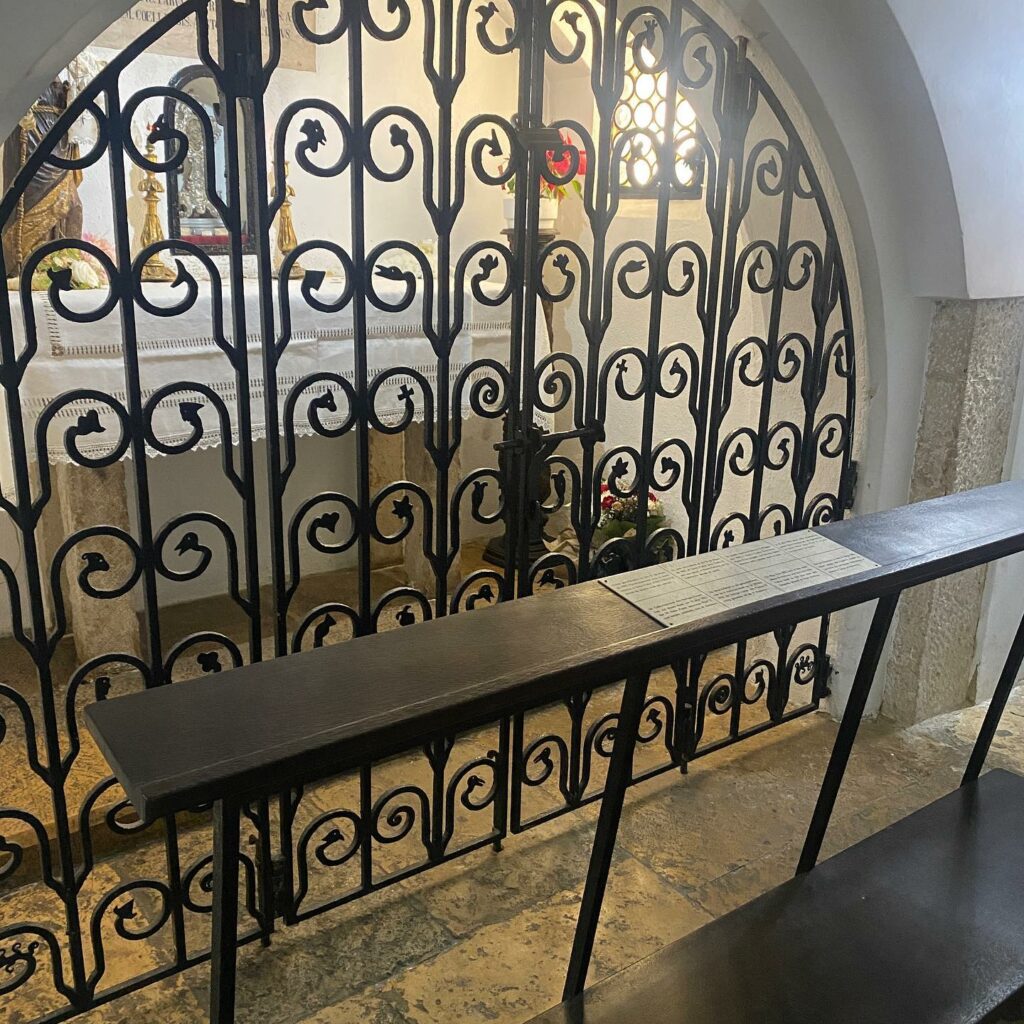
When planning your visit to the Alfama district, including the Saint Anthony church, consider these helpful tips:
- Wear Comfortable Shoes: The cobblestone streets of Alfama can be uneven.
- Check Opening Hours: Typically 10 AM – 6 PM, but verify beforehand.
- Visit During Off-Peak Hours: Early mornings or late afternoons are less crowded.
- Respect Dress Code: Shoulders and knees should be covered.
- Stay Hydrated: Bring water, especially in summer.
- Use Public Transport: The nearest metro station is Martim Moniz (Green Line); Tram 28 also stops nearby.
- Be Mindful of Worshippers: Keep noise levels low and avoid flash photography.
- Watch Your Belongings: Pickpocketing can occur in crowded areas.
- Explore Nearby Attractions: Include Lisbon Cathedral and the Alfama district in your itinerary.
- Plan for Accessibility: Confirm accessibility options if you have mobility issues.
Wrap-Up: Igreja Santo António Church Lisbon
The Chapel of Saint Anthony, which contains the remains of the Saint himself, is truly an architectural and historical marvel that provides a profound connection to Lisbon’s vibrant past and present.
Whether you are drawn to its intricate design, profound cultural heritage, or spiritual significance, visiting the Igreja de Santo António Church is an enriching and unforgettable experience.
Don’t miss out on exploring this gem in the city center, which showcases Lisbon’s revered history and artistry.
